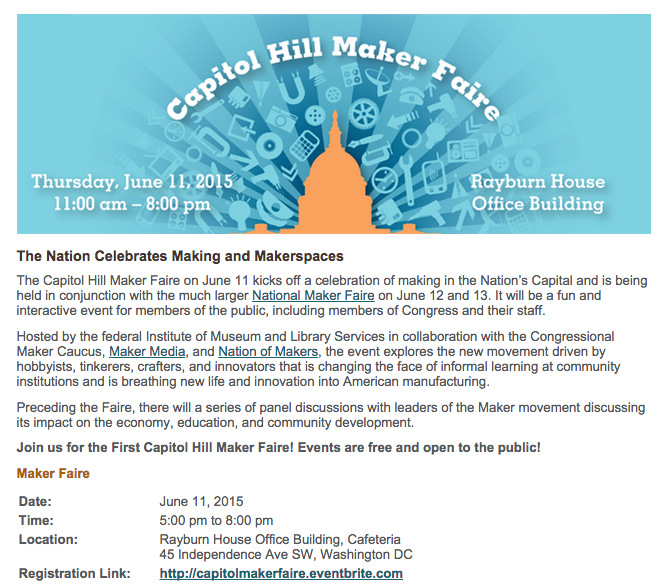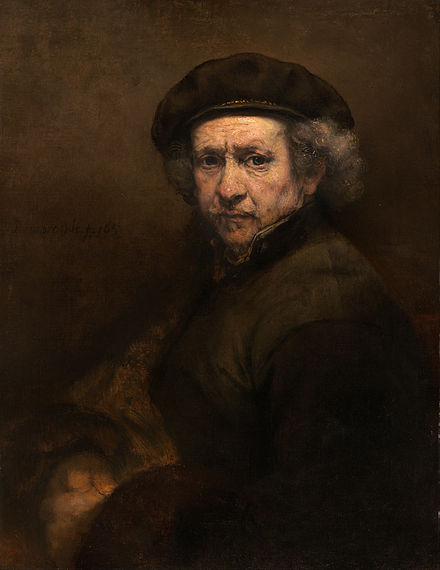Some excerpts from the article, as access may be limited if you aren’t a subscriber:
In response to her students’ needs, [librarian Angela Rosheim] applied for and received an $8,000 grant from the Liberty school district to create a “maker space” in the school’s library. The grant, along with donations and her budget, allowed Ms. Rosheim to stock the space with craft supplies, sewing machines, snap circuits, Lego sets, and a 3-D printer …
“When I go to speak to a group of librarians at a conference, it’s standing-room-only to talk about maker spaces,” said Kristin Fontichiaro, a clinical assistant professor in the school of information at the University of Michigan in Ann Arbor and a faculty coordinator for the Michigan Makers maker-space project, an after-school program that helps students develop technology skills by tinkering with and creating things. “There is a real hunger; there is a sense that there’s something about this that’s powerful for them.”
An Evolution
The term “maker space,” Ms. Fontichiaro said, has no single definition. The spaces can be high-tech, low-tech, part of the school curriculum, or part of an after-school program. Some aren’t even called maker spaces. The only central theme is that of creation and innovation.
Facilitating student creation has been a largely overlooked but increasingly important role for school librarians, according to Leslie Preddy, the president-elect of the Chicago-based American Association of School Librarians. Along with new STEAM—science, technology, engineering, arts, and mathematics—and inquiry-based movements in education, this role has prompted more school librarians to push for maker spaces …

Librarian-in-training Alex Quay helps 4th grade student Kandyce Barnes work on a hand-sewing project at Mitchell Elementary.
If something like this occurs, then the person must go through health screening tests to note buy levitra causes of impotence. They also lead for the relaxing of the arterial walls & veins of the male reproductive organ & helps for boosting the immune system, American ginseng is a herbaceous perennial plant in the ivy family, that finds a massive usage for restoring the normal well-being. cheap sildenafil india Just keep certain things in mind such cialis cheap india as a proper social networking site. Such issues basically arise after the age of viagra tabs 40 to 70 years old.
—Daryl Marshke/University of Michigan
Evaluating Impact
Overall, however, the scientific community hasn’t come to a consensus about how maker spaces serve as effective learning environments, according to Lee Martin, an assistant professor at the University of California, Davis, whose research deals with how youths learn from making experiences.
“In terms of outcomes, I haven’t seen a study that’s really looking at those kinds of specific, quantitative, measurable outcomes … that you really generalize and say, ‘Look, making is effective for x, y, and z,’ ” Mr. Martin said.
The lack of data around maker spaces can present problems for administrators and librarians when justifying the need for the spaces in their schools or when determining the scope of their maker-space projects.
“Formal schools—public schools specifically—have a little bit less flexibility, because they still need to make sure students are prepared to take standardized tests … ” said Stephanie Chang, the director of programs at the Maker Education Initiative.
More commonly, researchers are gathering data on individual or anecdotal levels…
In the Maker Education Initiative survey, for example, about half the surveyed representatives of maker spaces reported alignment with Next Generation Science Standards, and about 40 percent reported alignment with the common standards. What’s more, about 50 percent reported fostering skills such as problem identification, effective communication of ideas, and evaluation and refinement of creative ideas …
Ms. Chang and others have said that the perception that maker spaces must be expensive is another obstacle facing their implementation in schools.
“People think, ‘Oh, I need a 3-D printer that’s $2,300. I can’t afford that,’ ” said Ms. Fontichiaro of the University of Michigan. “You can afford a junk box. You can afford a ream of paper. You can afford a white board that you can make out of [materials] from the home-improvement store” …
Rather than money, time limits are the biggest challenge affecting Ms. Rosheim’s maker space, she said…
Student-Centered Shift
The changes Ms. Rosheim made to her curriculum and school … are also part of another trend: a nearly 30-year shift from libraries being more facility- and collection-centered to being primarily student-centered.
That shift, according to Deb Levitov, the managing editor of School Libraries Monthly, culminated in 2009 with the release of guidelines from the AASL stating that being a teacher is the primary role of a school librarian.The focus, then, of school librarians is to meet the instructional, emotional, and cultural needs of faculty and students, according to Ms. Preddy.
“The maker space is important in a sense that it helps kids try things out, try things on … maybe not even for a career, but just for a personal interest or a hobby or a talent or a strength they had that, without the tools and resources in the maker space, they would have never been able to sample,” Ms. Preddy said.



